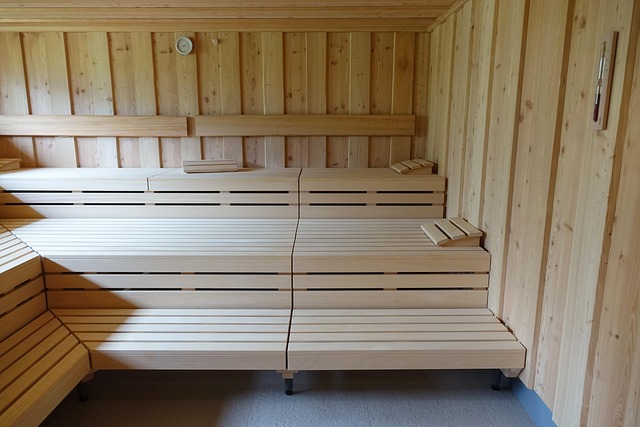Sleep optimization is vital for anyone pursuing fitness and exercise plans. Quality sleep aids muscle repair, hormone regulation, and overall recovery, enhancing performance and energy levels. To enhance sleep, create a tranquil bedroom environment with proper light, noise, and temperature control. Use natural bedding materials, maintain good ventilation, and invest in comfortable bedding. Establish a consistent 7-9 hour sleep schedule, practice relaxing bedtime rituals, and optimize your sleeping space to boost recovery after workouts and energize your day. Integrating these strategies into fitness and exercise plans significantly improves overall well-being, strength, endurance, and mental clarity.
Optimizing sleep is a powerful tool for enhancing recovery and boosting energy levels, crucial aspects of any successful fitness and exercise plan. This article explores the science behind sleep’s role in physical restoration, offering insights into creating an ideal sleep environment and implementing techniques to improve sleep quality. We delve into practical strategies that integrate sleep optimization into your fitness and exercise routine, ensuring you wake up refreshed and ready to conquer each day.
- Understanding Sleep's Role in Fitness and Exercise Recovery
- Creating an Optimal Sleep Environment for Enhanced Rest
- Implementing Techniques to Improve Sleep Quality
- Integrating Sleep Optimization into Your Fitness and Exercise Routine
Understanding Sleep's Role in Fitness and Exercise Recovery

Sleep is a fundamental pillar for anyone looking to optimize their fitness and exercise plans. During sleep, our bodies undergo essential processes that aid in muscle recovery, hormone regulation, and immune function enhancement. When we engage in physical activities, whether intense workouts or everyday exercises, our muscles experience microscopic tears and fatigue. Quality sleep facilitates the repair of these micro-tears, leading to stronger and more resilient muscles.
Additionally, adequate sleep plays a pivotal role in balancing hormones that regulate appetite, energy levels, and growth. For instance, growth hormone, crucial for muscle repair and growth, is primarily released during deep sleep stages. This hormonal balance ensures that our bodies are well-equipped to handle the demands of fitness routines. By prioritizing sleep in your fitness and exercise plans, you’re not just resting; you’re actively contributing to your body’s ability to perform at its best and recover from physical exertion.
Creating an Optimal Sleep Environment for Enhanced Rest

Creating a sleep-conducive environment is a powerful tool for anyone looking to optimize their recovery and energy levels, especially those following fitness and exercise plans. The bedroom should be transformed into a sanctuary for rest, where factors like light, noise, and temperature are carefully considered. Dim or amber lighting, rather than the blue glow of screens, can signal to your body that it’s time to wind down. Similarly, minimizing external noises through earplugs or white-noise machines creates a peaceful atmosphere.
Temperature also plays a crucial role in sleep quality. Cooler temperatures, around 65°F (18°C), promote deeper sleep. Using breathable, natural fabrics for bedding and ensuring the room is well-ventilated can help maintain this ideal temperature. Additionally, investing in a comfortable mattress and pillows that support your body correctly will enhance overall comfort and contribute to a more restful night’s sleep, benefiting those with active fitness and exercise routines.
Implementing Techniques to Improve Sleep Quality

Implementing techniques to improve sleep quality is a vital part of any fitness and exercise plan. Start by establishing a consistent sleep schedule, aiming for 7-9 hours nightly. This routine helps regulate your body’s internal clock, promoting better rest at night and increased alertness during the day. Additionally, create a relaxing bedtime ritual to signal to your mind and body that it’s time to wind down; this could include activities like reading, meditation, or taking a warm bath.
The environment you sleep in also plays a significant role. Ensure your bedroom is cool, dark, and quiet. Consider using blackout curtains, earplugs, or a white noise machine if needed. Moreover, invest in comfortable bedding that supports your specific needs, ensuring you get the restorative sleep required for optimal recovery after workouts and to fuel your energy levels throughout the day.
Integrating Sleep Optimization into Your Fitness and Exercise Routine

Integrating sleep optimization into your fitness and exercise routine is a strategic move that can significantly enhance recovery and overall well-being. Adequate sleep plays a pivotal role in muscle repair, hormone regulation, and cognitive function—all essential for peak performance in training and competition. By prioritizing sleep, athletes and fitness enthusiasts can experience improved strength, endurance, and mental clarity.
When designing your fitness and exercise plans, consider allocating time for optimal rest. This might involve adjusting workout schedules to ensure adequate recovery periods or implementing relaxation techniques before bed. Incorporating habits like consistent sleep times, a relaxing bedtime routine, and a sleep-conducive environment can enhance the quality of your rest, making each wakeful hour more productive and energizing.
By optimizing your sleep, you can significantly enhance recovery and energy levels for improved performance in fitness and exercise plans. Understanding the critical role of sleep, creating a conducive environment, implementing effective techniques, and seamlessly integrating these practices into your routine are key steps towards achieving better rest and overall well-being. Embrace these strategies to unlock your body’s full potential and take your fitness journey to new heights.
